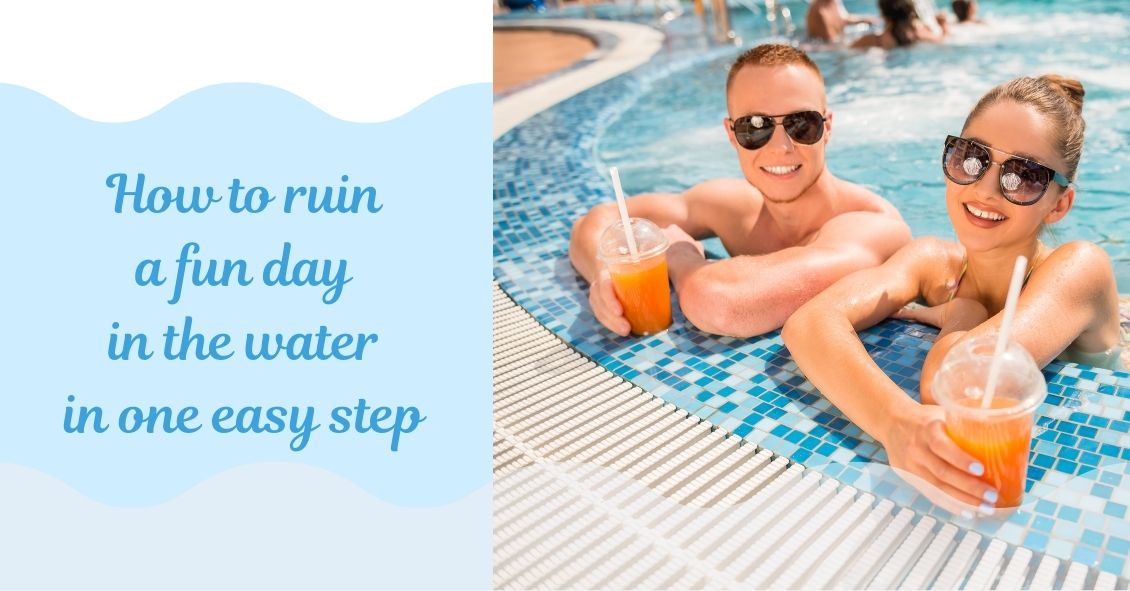
It's the summer and one of the most common questions eye doctors are asked is, “Is it safe to swim in my contact lenses?”
The answer we give is “NO!"
Do millions of people swim with their contact lenses? The answer is “Yes, they do, but it is NOT a recommended activity.’’ There are several reasons why, ranging from comfort issues to others that are far more sinister and potentially blinding.
The first reason not to swim with contacts in is that the pH and buffering of your tears is not the same as plain water, and certainly not that of ocean or pool water.
Contact lenses, especially soft ones, are designed to do best in pH and buffers of solutions that mimic your natural tear film. This pH difference is often why after you swim in a chlorinated pool your eyes tend to redden, burn or blur.
When pool water or another water source mixes with your tears, the pH rapidly changes and there is a mini-chemical reaction occurring on the surface of your eye. Now if you add a contact lens to this mix, it prolongs the chemical mixing that occurs. The actual contact lens will often swell due to the pH and buffer changes that are occurring and this swelling results in blurred vision.
When a contact lens swells it often tightens its fit onto your eye, causing discomfort or even pain. This is usually temporary until the volume of tears surpasses the volume of foreign water and the tears take over and the contact lens returns to its normal thickness, but the discomfort and blurring can last several minutes.
The second reason for not wearing your contacts swimming is that you can lose your lenses under water.
Contact lenses adhere to your eyes via a principle called capillary attraction, which happens when two surfaces are held together by a thin layer of liquid.
When a contact lens is placed on your eye it is the tears that hold it there more than anything else. Now if you go into a large body of water--like a pool, ocean, etc.--there is more water outside of your eye than the little layer between the contact and your eye and your contact lens floats out.
This can result in either a dislocated contact lens under an eyelid or a lost contact lens. Since most people wear disposable lenses it may not be a big deal, but if they were the only pair of lenses you wore to the beach and your sunglasses are not prescription, you could have a difficult ride back home.
The final and most important reason not to wear contacts while swimming is infection.
There are many different types of waterborne bacteria, viruses, fungi, and microorganisms. Some may result in the typical types of conjunctivitis that are easily treated with antibiotics. But as with any infection, you will have to stop wearing your contact lenses while you are being treated.
The two most difficult types of infections to treat are fungal infections and microorganisms/protozoans, and treatment options are limited.
Fungal infections are notoriously difficult to treat and tend to require very long treatment times; these infections can lead to corneal scarring and sometimes permanently decreased vision.
The most dangerous type of infection is called Acanthamoeba. This is a protozoa commonly found in soil and fresh water. If you happen to contract Acanthamoeba the infection commonly results in a painful eye, can ultimately cause blindness, and the only course of treatment if that happens is to consider a corneal transplant.
The incidents of this infection are quite low – but you don’t want to be the person who contracts it because you swam in your contacts.
To avoid infection risks, organizations like the American Optometric Association (AOA), American Academy of Ophthalmology (AAO), and even the US Food and Drug Administration (FDA) recommend against swimming in any type of pool, lake, ocean or other body of water while wearing contacts.
So with all those authorities advising against swimming with contact lenses, what are you options?
First, if your vision is not too bad, you should swim without your contact lenses and wear prescription sunglasses while on the beach. Second, if your prescription is significant, they do make prescription swim goggles that can be worn while swimming. Then once you have stopped swimming, switch over to prescription sunglasses for relaxing afterwards or consider putting your contact lenses in after you have done your laps.
One bright spot on the horizon for those who absolutely MUST swim in their contact lenses is that with the ever-growing use of daily disposable contact lenses, swimming in contacts is safer than for those who wear extended wear two-week or monthly lenses.
While there is still risk for potentially sight-threatening infections, those who dispose of their contacts after swimming see this risk decrease dramatically.
Please use extreme caution if you need to swim in contact lenses. For avid swimmers who have high prescriptions and cannot use prescription goggles, daily disposables are a must. However, most people do just fine with not wearing contacts at all while in the water.
Article contributed by Dr. Jonathan Gerard
This blog provides general information and discussion about eye health and related subjects. The words and other content provided in this blog, and in any linked materials, are not intended and should not be construed as medical advice. If the reader or any other person has a medical concern, he or she should consult with an appropriately licensed physician. The content of this blog cannot be reproduced or duplicated without the express written consent of Eye IQ.
